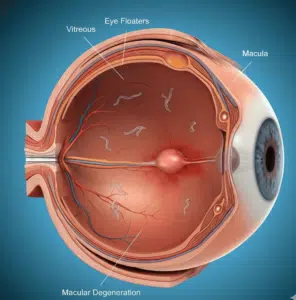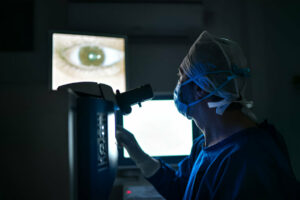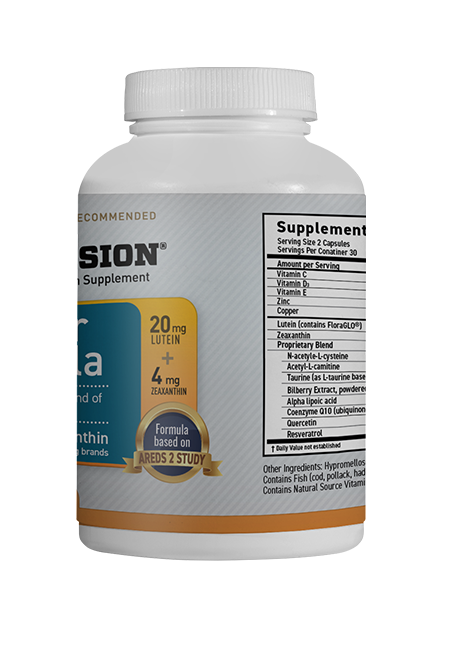Current treatments for glaucoma primarily focus on lowering eye pressure through prescription eye drops or medicine, laser therapies or surgery.
Glaucoma often presents no symptoms, leading to its development unnoticed for years. If left untreated, however, glaucoma will lead to gradual loss of peripheral vision before ultimately leading to blindness.
Causes
Optic nerve damage, which sends images from what you see to your brain, is caused by numerous eye conditions. One of the primary culprits for damage to this vital structure is increased intraocular pressure or IOP within an eyeball due to glaucoma’s increased production and/or reduced drainage of fluid filling the front part of your eye (aqueous humor), restricting blood flow to optic nerve cells causing blindness over time.
Most people with glaucoma suffer from open-angle glaucoma, which usually develops slowly over time. Clogged drainage canals cause your internal eye pressure to rise gradually resulting in vision loss leading to permanent blindness if left untreated. If untreated vision loss will persist and ultimately become irreparable.
Closed-angle glaucoma, on the other hand, is less common but more dangerous if left untreated. It occurs when your eye’s drainage area suddenly becomes blocked off from draining inner eye fluid, dramatically raising your IOP. It should be treated immediately in order to prevent blindness; symptoms typically include blurred vision with rainbow halos around lights as well as severe headaches and nausea.
Elderly adults tend to be at higher risk for glaucoma than other age groups; however, anyone can develop the disease, so it’s essential to visit your eye doctor regularly in order to be evaluated for signs of glaucoma and treated as soon as possible.
If they detect any of these symptoms, medical testing will be ordered to establish a definitive diagnosis. Such testing might include optical coherence tomography (OCT), pachymetry and gonioscopy. Glaucoma treatment options vary widely but all focus on lowering intraocular pressure: this could involve eyedrops or pills or surgery for improved drainage of fluid or laser therapy as methods; ultimately the goal is always slowing its progress.
Symptoms
Glaucoma is an irreversible eye disease, typically marked by gradual peripheral vision loss that may eventually progress into loss of central vision and/or visual acuity. Early diagnosis and treatment are key in order to avoid permanent blindness; as the second-leading cause of blindness in America, it affects people of all ages; though those aged 40 or above may be at an increased risk. Comprehensive eye exams are highly recommended, particularly among those who may have risk factors like high blood pressure, diabetes or family history of glaucoma.
Glaucoma occurs due to an abnormally high fluid pressure in the eyes. Eyes produce fluid known as aqueous humor to keep eyes healthy; when this fluid production exceeds drainage rates, an increase in intraocular pressure results and damage occurs, leading to glaucoma.
The optic nerve is made up of millions of tiny nerve fibers that transmit signals from your retina to the brain and translate them into vision. If these fibers die due to too much pressure, blind spots will form. Other symptoms of glaucoma may include tunnel vision, visual distortions, blurry vision and even blindness in severe cases.
Open-angle glaucoma is one of the most prevalent types of glaucoma. When this form develops, drainage canals become blocked up, not allowing enough fluid out, leading to increased intraocular pressure and increasing intraocular pressure levels over time. Unfortunately, people typically don’t notice any changes until it’s too late and vision impairment occurs.
Other types of glaucoma, including acute angle-closure glaucoma and secondary glaucoma, can develop more quickly, sometimes leading to sudden vision loss. Acute angle-closure glaucoma should be considered an emergency and requires prompt medical care; symptoms of acute angle-closure glaucoma include blurred vision, headache, redness of the eye, nausea as well as light sensitivity problems or double vision (diplopia). Such forms of glaucoma also typically accompany severe pain in both eyes which could prove fatal over time.
Diagnosis
There are various tests available to determine whether you have glaucoma. These include tonometry (which measures pressure inside your eye), optic nerve examination and visual field tests; additionally, your physician will perform a history and physical exam in order to assess risk.
Open-angle glaucoma typically develops slowly over time without any noticeable symptoms, yet if left untreated can result in permanent vision loss. Clogged drainage canals of your eye increase internal eye pressure which damages optic nerve and results in vision changes that cannot be reversed – therefore regular eye examinations for glaucoma is key for maintaining eye health and staying ahead of this condition.
Closed-angle glaucoma, although less prevalent, occurs when the drainage angle between cornea and iris narrows, blocking fluid drainage and leading to rapid eye pressure increases, often with severe symptoms including pain, blurred vision, halos around lights, nausea and vomiting; untreated this could result in blindness within days unless treatment begins immediately.
Secondary Glaucoma occurs when another disease, surgery, or eye injury mechanically blocks outflow of fluid from the eye. This could be caused by an eye injury, tumor, uveitis infection (uveitis), cataract development or even pseudoexfoliation syndrome and pigmentary dispersion syndrome (PDS).
If you have glaucoma, your doctor will prescribe medication to lower the eye pressure and protect your vision. Eye drops are usually prescribed because they’re safe and effective at controlling intraocular pressure; newer glaucoma medications have significantly fewer side effects than older types of medication; pills or laser treatment may also be provided; in such treatments a laser or light opens a channel that allows fluid to escape more freely to reduce eye pressure.
Regular eye exams are the best way to prevent or detect glaucoma early when there is minimal damage and treatment can be most successful. People who have had family history of the condition or those taking corticosteroid medicines are at increased risk, as is anyone over age 40 who does not undergo annual health exams for their eyes.
Treatment
Glaucoma treatment involves lowering intraocular pressure. This pressure builds up due to fluid build-up inside the eye and can damage the optic nerve, transmitting visual messages from eye to brain and leading to blindness if damage occurs. Treatment typically begins with prescription eye drops containing carbonic anhydrase inhibitors which work by increasing fluid drainage within the eye; other treatments, such as alpha-agonists, parasympathomimetic agents and pilocarpine are also available if these don’t lower pressure; your doctor may prescribe surgical techniques which promote better fluid drainage or cause your eye production to lessen.
Open-angle glaucoma is one of the most prevalent types of glaucoma and typically develops slowly over time. This occurs when drainage channels in the eye become blocked up, meaning not enough fluid drains from it – leading to gradual side vision loss, yet people often don’t recognize its symptoms until much of it has already been compromised.
Other forms of glaucoma develop more rapidly and may be classified as narrow-angle or angle closure glaucoma. This form occurs when an iris blocks fluid outflow from the eye, and left untreated can result in sudden vision loss as symptoms such as blurry vision, halos around lights, intense eye pain and nausea may develop.
As early signs of glaucoma can often go undetected, regular comprehensive eye exams are so vital. Our optometrist can detect early warning signs using advanced diagnostic testing like optical coherence tomography (OCT) to assess optic nerve health, and visual field tests to check peripheral vision.
If glaucoma is diagnosed, our team will create an individual management plan tailored to your specific needs. Early detection is key; that’s why we advise scheduling an annual screening appointment if there is a family history or you are over 50.













